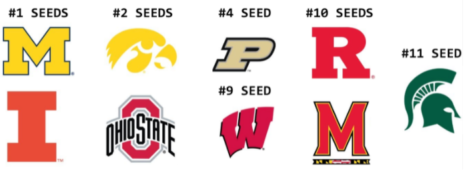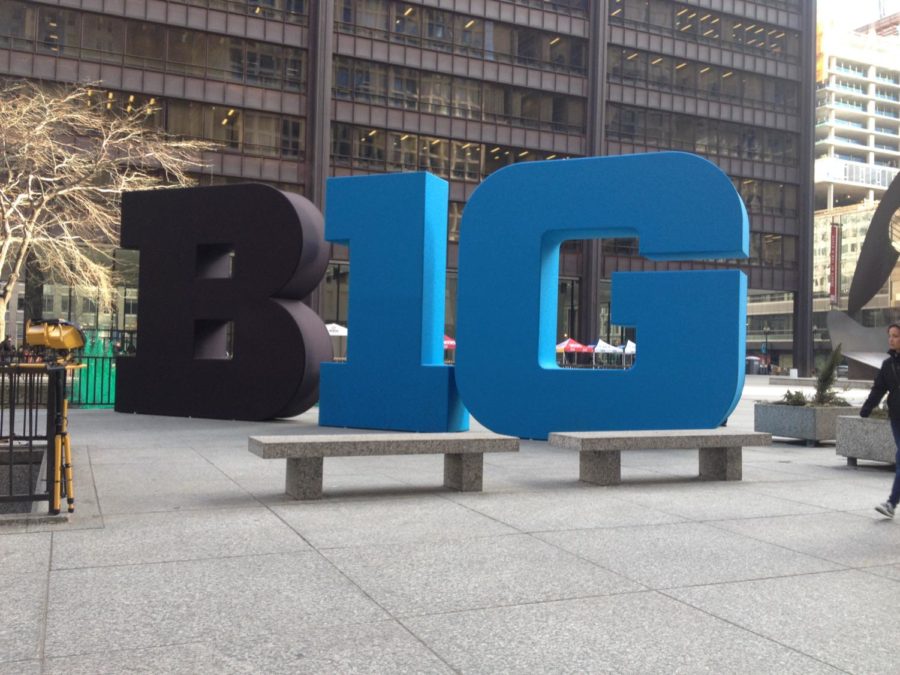Big Ten are Big Losers
The return of March Madness has been extremely sweet this year. Streaming constant basketball is an undeniably satisfying option to have again after the tournament was cancelled last year.
All throughout this past season, there has been a large debate over which conference will turn out to be the best when it comes to March. And, now that we’re at the end of the tournament, we can compare these expectations with reality. For some conferences, though, the reality is painful.
The Big Ten Conference, made up of fourteen teams, was projected to be the most dominant conference this year. In the preseason poll, half of the entire conference was ranking in the AP Top 25, with seven total teams and four in the top thirteen.
As the season progressed, it became extremely evident that there were a few very strong teams in the Big Ten, just as predicted. By week two of the season, the conference had four top ten teams in the nation.
The Iowa Hawkeyes, Wisconsin Badgers, Illinois Fighting Illini, and Michigan State Spartans all found themselves sitting pretty through the first four weeks of the season. Where could the conference go from here… besides up?
In week six, the Big Ten recorded nine teams in the AP Top 25, with rare appearances from Minnesota and Northwestern. The all time record is ten teams in the AP Top 25, which was set by the Southeastern Conference (SEC) in 2015. The numbers showed that the Big Ten was well on track to catch this record, as Indiana received votes in week six to be ranked, although they did not end up in the Top 25.
How could such a successful start to the season end in a considerably miserable tournament? The numbers show the inevitable decline, starting in week seven.
The conference lost two spots in week seven, but there were also concerning drops within the Top 25. The Spartans fell from number seventeen to number twenty three with just one win on the week. Wisconsin and Rutgers also dropped a spot each. Although these changes are not the most noticeable, the worst was yet to come.
The first surprise came in week eight, when the Spartans permanently fell out of the Top 25. Following them was Rutgers and Northwestern. In the following few weeks, the conference only held six spots in the Top 25.
Michigan, Wisconsin, Illinois, Iowa, and Ohio State kept themselves in the Top 25 through the rest of the regular season. Purdue and Rutgers each found their way into the Top 25 once more by the end of the season, but only Purdue sustained a spot.
So, by the end of the regular season, the Big Ten held just five spots in the AP Top 25. As we headed into tournament season, speculations flurried about how many Big Ten teams would even make it to the big dance, but there was no question that the teams earning a bid would find success.
On Selection Sunday, there was no surprise that the Big Ten claimed two #1 seeds in Illinois and Michigan. This is something to be celebrated for the conference, but how well will these teams do? The rest of the conference played out as shown below:

Then comes the time where the Big Ten must prove itself worthy of the nine teams that were seeded, and this is where the “big losers” began to show.
Michigan State did not even make it to the field of 64, as they lost their play in game to the UCLA Bruins. The Spartans threw away a fourteen point lead as their junior leader Aaron Henry went cold in overtime and Rocket Watts turned the ball over multiple times down the stretch.
Neither Purdue or Ohio State made it past the first round either, as the Buckeyes endured one of the most stunning upsets of the season in a three point overtime loss to Oral Roberts University. After Duane Washington Jr. missed an open three at the buzzer and Purdue was simply outshined by North Texas, the Big Ten already lost a third of their teams.
As the tournament progressed into the Round of 32, the Big Ten’s stock plummeted. Maryland lost by nineteen points to Alabama, Iowa lost by fifteen points to #7 seeded Oregon, Wisconsin lost by thirteen to Baylor, Rutgers lost a close game against Houston, and, in the biggest upset of the round, Illinois lost by thirteen to #8 seeded Loyola Chicago.
So, as the tournament schedule comes to its six day break before the Sweet Sixteen, what happened to the Big Ten? Only the Michigan Wolverines remained in the tournament, but they were unable to pass the UCLA Bruins in the Elite Eight. The conference collapsed in the tournament.
As a Spartans fan myself, I knew the feeling of a gradual decline throughout the entire season. Watching a team that began with such high expectations plummet week after week is painful. In the Big Ten, the teams only play five or six non-conference matchups, and they then are in a full conference schedule for the rest of the regular season. Because of this, the Big Ten developed its own way of basketball with certain play styles, such as a high pick and roll, and the same referees and matchups every week.
This is deceiving. If a team like Illinois dominates in Big Ten play, they dominate in how the Big Ten plays. As soon as a team is thrown into a tournament with sixty three other teams and at least twenty different play styles, the team has to essentially throw out all of the play styles they’ve developed in conference play in order to adjust. The March Madness tournament is extremely fast paced, so there is quite literally no time to put weeks and weeks of practice into a new play style.
The Big Ten relied on Michigan to keep their conference reputation intact heading into the Elite Eight, hoping for a deep run by the Wolverines. But, realistically, it was too late to save this severely damaged reputation that the conference has dug itself into.
Hi, my name is Seth Kruger and I am an Editor-in-Chief for The Hawkeye. I am in my senior year and this is my third year on staff. Outside of The Hawkeye,...









